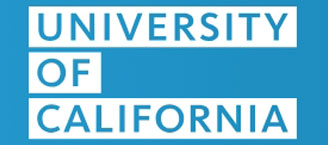BOC Sciences provides comprehensive strategies for antibody-drug conjugate (ADC) to our customers worldwide. We possess the most advanced equipment and unique R&D expertise to provide personalized antibody conjugation services according to customers' specific needs promptly. Moreover, we monitor our products according to strict quality control standards during development and optimization processes to ensure our customers receive first-class services and products.

Antibody conjugation refers to the covalent attachment of antibodies to other molecules, such as drugs, fluorescent dyes, enzymes, or nanoparticles, using chemical or biological methods to enhance their specific functions. For example, in ADCs, the antibody targets specific cells, while the conjugated drug exerts a cytotoxic effect. Antibody conjugation is widely used in biomedical research, diagnostic assays, and targeted therapy, improving treatment specificity and efficacy while reducing side effects.
The development of ADCs has been accelerated worldwide in recent years, and this novel biotechnological drug is a potent anticancer agent and also considered an essential disease treatment. The complex structure and a high degree of heterogeneity of ADC pose significant challenges for structural characterization. Among them, the determination of the drug-to-antibody ratio (DAR), drug conjugation site, and conjugation ratio are relatively complicated. ADC is considered to be a critical and promising anti-tumor biotechnological drug. Up to date, fourteen conjugates have been approved by regulatory agencies for cancer treatments. According to the antibody's characteristics and our customer's specific requirements, BOC Sciences can propose the most appropriate conjugation strategy to achieve the ADC you are interested in.
Depending on the reaction site, conjugation strategies can be divided into non-specific conjugation by native residues or site-specific conjugation by genetic engineering sites and UV cross-linking. Non-specific conjugation techniques include lysine conjugation and cysteine conjugation, which are classical and mature, without the need to introduce non-natural amino acids. Site-specific conjugation can enhance the site-specificity of ADC conjugation by altering the amino acid sequence and introducing a reactive handle, including enzyme-modified antibodies, interchain disulfide reengineering, and non-natural amino acid conjugation techniques. Enzymatically modified antibodies enable enzyme-chemical two-step efficient site-directed conjugation, so certain enzymes recognize specific amino acid tags. Nevertheless, Non-natural Amino Acids Conjugation can introduce special groups to facilitate efficient specific conjugation reactions.
BOC Sciences provides high-quality antibody conjugation services, covering the entire process from design and optimization to production, catering to the needs of biopharmaceutical, diagnostic, and research fields. We employ advanced chemical and enzymatic conjugation techniques to precisely link antibodies with small-molecule drugs, enhancing targeting specificity and bioactivity. Additionally, BOC Sciences has a professional R&D team and a rigorous quality control system to ensure conjugation efficiency, stability, and batch-to-batch consistency. We offer flexible conjugation strategies, including thiol, amide, and azide-alkyne chemistry, to meet diverse application requirements.
Glycan conjugation technology modifies natural protein glycans using endoglycosidases to expose N-acetylglucosamine. Subsequently, azide-modified N-acetylgalactosamine is transferred onto the antibody’s N-acetylglucosamine via glycosyltransferases. Finally, a click chemistry reaction enables site-specific conjugation of the ADC. The advantage of this technique lies in coupling the drug linker to the glycan chain without altering the amino acid sequence, ensuring the conjugation occurs at sites distant from amino acid residues.
Cysteine conjugation relies on the specific reaction between cysteine residues (thiol groups) on the antibody and thiol-reactive functional groups installed on the payload. Typically, IgG1 antibodies contain interchain and intrachain disulfide bonds. The interchain disulfide bonds are exposed externally and can be readily reduced to release free cysteine residues, providing conjugation sites for the linker-payload. Due to the limited number of binding sites and the unique reactivity of thiol groups, using cysteine as a conjugation site helps reduce ADC heterogeneity.
Lysine residues are highly abundant (7.2%) and surface-accessible. An IgG1 antibody contains approximately 90 lysine residues, with over 30 available for chemical modification. This conjugation method is rapid and convenient but has relatively low selectivity and insufficient homogeneity, often leading to ADCs with variable DAR and conjugation sites, which impact ADC pharmacokinetics (PK) and pharmacodynamics (PD).
Conjugating drug linkers to non-natural amino acids within antibodies is a novel site-specific conjugation strategy for generating homogeneous ADCs. Antibodies incorporating non-natural amino acids enable precise, quantitative conjugation with drug linkers, resulting in ADCs with uniform DAR, high efficacy, enhanced stability, and improved safety profiles.
Through genetic engineering, specific amino acid sequences are artificially introduced into antibodies, which can be recognized and modified by specific enzymes, enabling site-specific conjugation. Commonly used enzymes include formylglycine-generating enzyme (FGE), transglutaminase (TG), transpeptidase, and tyrosinase.
Bispecific antibody (BsAb) conjugation links bispecific antibodies to functional molecules. BsAbs can simultaneously recognize two different antigens or epitopes, enhancing the precision of targeted therapies. By conjugating cytotoxic drugs, radioactive isotopes, or fluorescent probes through chemical or enzymatic methods, BsAb conjugation improves ADC specificity, optimizes drug efficacy, and reduces off-target toxicity.
Site-specific antibody conjugation is a strategy that employs precise chemical modifications at predetermined sites to conjugate antibodies with drugs or probes. Compared to random conjugation, this method ensures uniformity, preserves antibody activity, and optimizes in vivo pharmacokinetic properties. Common approaches include enzyme-catalyzed modification, non-natural amino acid incorporation, and thiol-based engineering.
Thio-engineered antibodies are generated through genetic engineering or chemical modification to introduce additional free thiol (-SH) groups, enhancing control over antibody conjugation reactions. This technology enables the preparation of site-specific ADCs, improving conjugation efficiency, stability, and reducing heterogeneity.

BOC Sciences provides tailored antibody conjugation solutions for each client, optimizing for specific drug carriers and clinical needs. This customization ensures the efficacy and safety of each ADC.
Our team consists of highly skilled scientists and technical experts who specialize in various aspects of antibody conjugation technologies, including PEGylation, linker selection, and drug payload optimization.
BOC Sciences utilizes advanced conjugation technologies, including chemical conjugation, enzymatic methods, and biotechnological approaches, to ensure conjugation efficiency and stability.
All conjugation and modification processes follow strict quality control standards to ensure that every batch of ADC meets cGMP requirements. We manage the entire process from early-stage research to clinical phases, ensuring product safety, efficacy, and consistency.
While maintaining high quality, BOC Sciences is committed to improving delivery efficiency. We are capable of responding quickly and shortening research and development cycles to accelerate ADC product development.
We offer flexible collaboration models, ranging from pure technical services to full research and development support and production services. Whether small-scale laboratory research or large-scale clinical manufacturing is required, BOC Sciences provides integrated solutions.

Antibody conjugation primarily relies on specific functional groups on the antibody molecule, such as the primary amine (-NH₂) on lysine (Lys), the thiol group (-SH) on cysteine (Cys), carboxyl groups (-COOH), or glycosylation modification sites. These groups can covalently bind with specific crosslinkers or labels to form stable antibody-label conjugates. The following are the common steps in the antibody conjugation protocol:
In ADC chemical conjugation, the accessible amino acid residues on the antibody surface are controlled to react with the reactive handles installed on the linker. Depending on the chosen chemical conjugation method, this process produces a mixture of ADC species with different DARs and conjugation sites. Typically, a broad DAR distribution can result in reduced efficacy, so it is necessary to control the distribution strictly. A high DAR can not only increase potency but also increase the risk of aggregation, clearance, and premature release of toxic payloads during circulation. This risk can be minimized by using hydrophilic, sufficiently stable linkers. Overall, for each ADC, the key is to determine the optimal DAR and control its distribution to maximize the balance of efficacy, tolerability, and cytotoxicity.
In addition to conjugation support, BOC Sciences provides comprehensive antibody modification services, covering antibody conjugation, labeling, and engineering to meet the needs of the biopharmaceutical, diagnostic, and research fields. We specialize in bioconjugation technology and can efficiently perform glycosylation modifications, Fc engineering, and other high-end custom services. With advanced analysis and purification platforms, BOC Sciences ensures high stability, specificity, and reproducibility for every modified antibody. Additionally, we offer GMP-grade custom services, supporting development from small-scale research to large-scale production to assist in ADC applications.
At BOC Sciences, we focus on the development and production of ADCs aimed at targeting and treating specific diseases, particularly cancer. Our extensive expertise enables us to provide a range of high-quality ADC products, including cytotoxins, linkers, and fully integrated ADCs. We ensure that each component meets stringent standards for efficiency, safety, and reliability. Below is an overview of our ADC capabilities:

BOC Sciences offers a variety of cytotoxins for the research and development of ADCs. We provide cytotoxins targeting different antigens, including classic microtubule inhibitors, DNA crosslinkers, and more. These cytotoxins possess high toxicity, effectively destroying tumor cells, while also maintaining good selectivity and specificity, greatly enhancing the precision and efficacy of ADC therapies.

Linkers play a crucial role in the production of ADCs. BOC Sciences offers a variety of linkers that efficiently connect antibodies with cytotoxins. Our linkers include reducible, degradable, and stable types, offering excellent chemical stability and biodegradability to ensure precise drug release at the target cells while minimizing toxicity to normal cells.

BOC Sciences provides cytotoxin products that are successfully conjugated with linkers, offering clients complete ADC formulation solutions. We employ efficient linker technology to ensure the stability between cytotoxins and linkers, while optimizing the drug release mechanism. Our cytotoxins with linkers products meet rigorous quality standards and are widely used in clinical research and development for cancer treatment.
An antibody conjugate is a complex formed by chemically or biologically linking an antibody to a functional molecule, such as a toxin, fluorophore, radionuclide, or biomarker. In ADCs, antibody conjugates are designed to target specific antigens, selectively delivering cytotoxic drugs to tumor cells, thereby improving anticancer efficacy while reducing damage to healthy cells.
Conjugation in antibody-drug conjugates (ADCs) refers to the chemical linkage of a cytotoxic payload to a monoclonal antibody (mAb) to form a targeted therapeutic agent. The conjugation process requires efficient and stable linking strategies to ensure that the drug remains intact in circulation and is precisely released inside tumor cells, thereby enhancing therapeutic efficacy while minimizing off-target toxicity.
ADC conjugation techniques mainly include lysine conjugation, cysteine conjugation, site-specific conjugation, and enzyme-catalyzed conjugation. Lysine and cysteine conjugations are the most common methods, utilizing lysine residues and partially reduced disulfide bonds on the antibody, respectively. Site-specific conjugation employs engineered antibodies or bioorthogonal reactions to improve homogeneity, while enzyme-catalyzed conjugation uses specific enzymes to enable precise conjugation at designated sites, enhancing stability and batch consistency.
From cytotoxin synthesis to linker design, discover our specialized services that complement your ADC projects.
Find exactly what your project needs from our expanded range of ADCs, offering flexible options to fit your timelines and goals.
Contact our experts today for pricing and comprehensive details on our ADC offerings.










